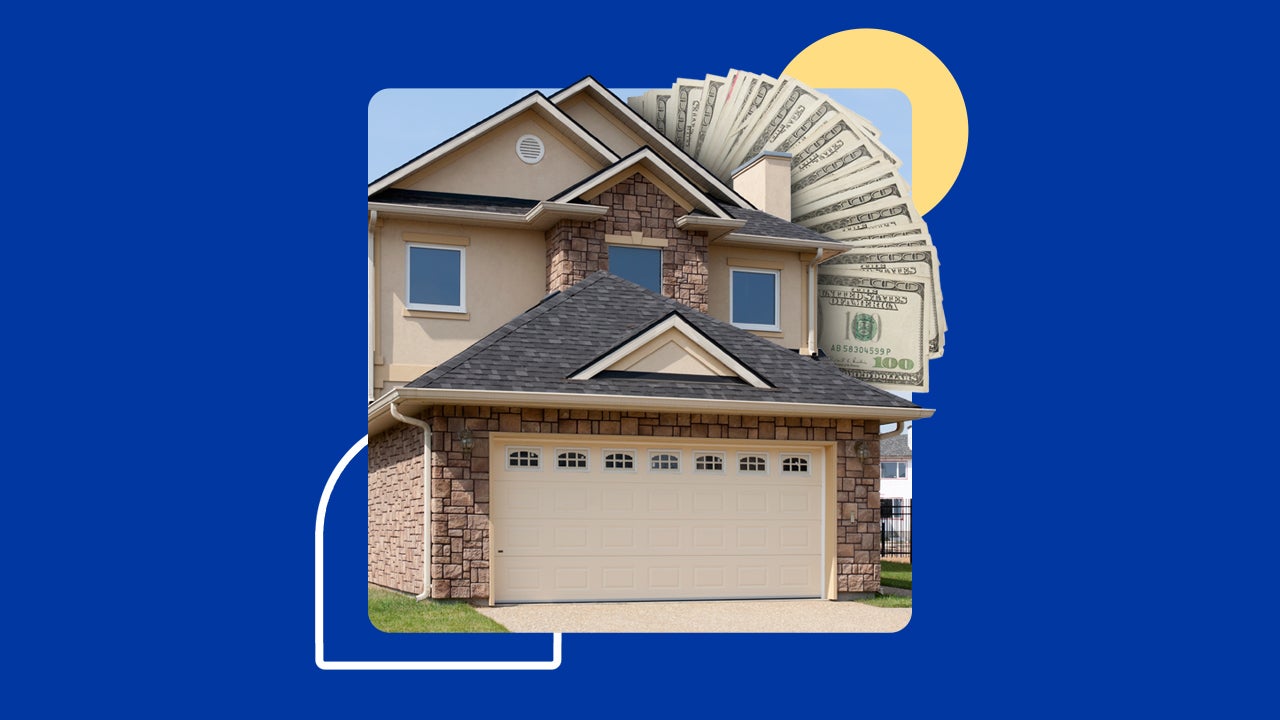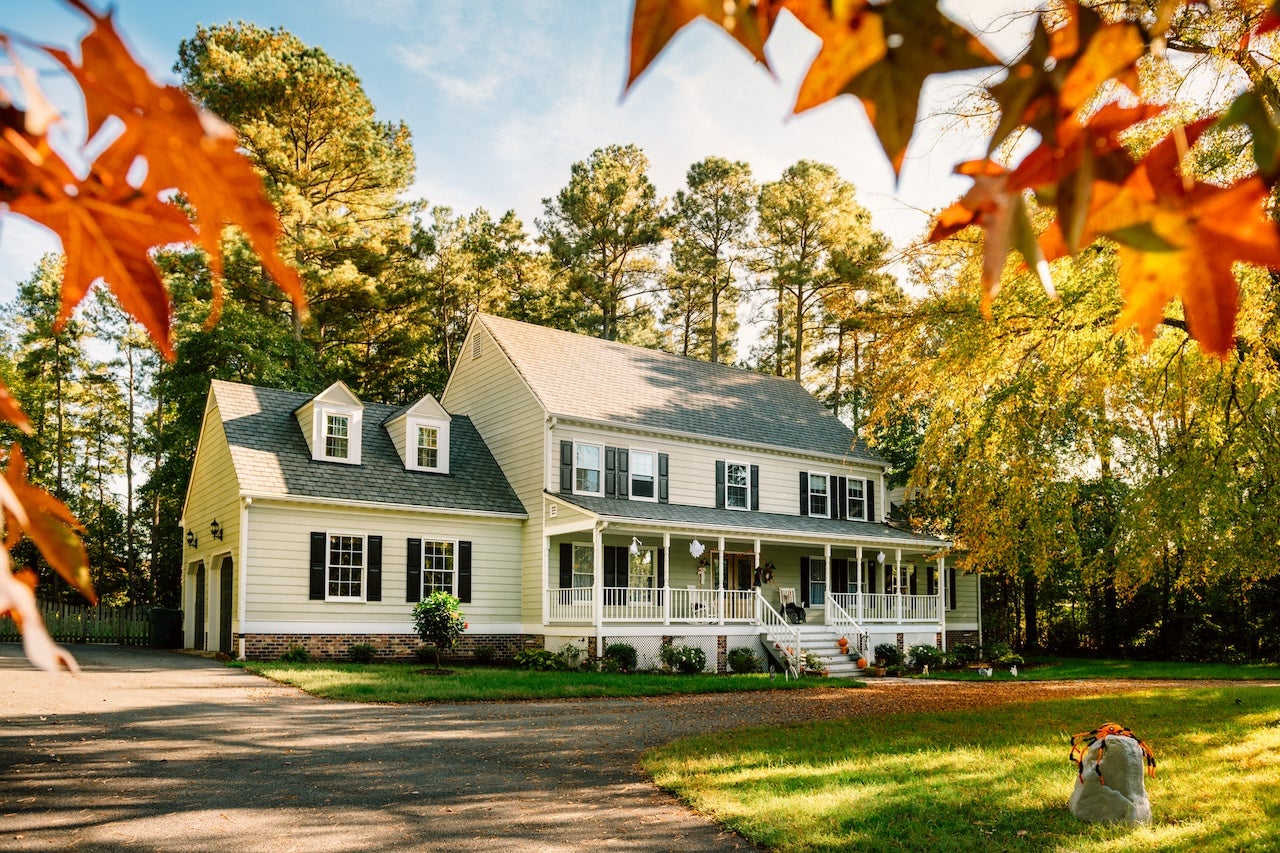Study: Americans need a six-figure salary to afford a typical home in nearly half of U.S. states

If you want to buy a house this year, it’ll require a larger slice of your income.
It’s a harsh reality that Allison Dunbar, a product development coordinator and aspiring homeowner in Pittsburgh, quickly realized while speaking to her oldest brother about his homebuying experience in the same city a few years ago.
“He bought his house in Pittsburgh in 2018, and he got a very nice house in a nice area that fits his family now for $20,000 under asking,” Dunbar says. “That is not a thing in Pittsburgh anymore.”
A combination of high mortgage rates, rising home prices and low housing inventory over the last two years is pushing homeownership further out of reach for would-be homeowners, especially first-timers. To afford a median-priced home of $402,343, Americans need an annual income of $110,871, according to a new Bankrate analysis. That’s nearly a 50 percent increase in just the last four years.
To better understand the housing affordability crunch across the U.S., Bankrate also calculated how much aspiring homeowners need to earn annually to afford a median-priced home in all 50 states and the District of Columbia, compared to four years ago. Bankrate’s analysis found Americans need to earn six figures to afford a median-priced home in 22 states and the District of Columbia. Four years ago, only six states and the District of Columbia required a salary that high to afford a median-priced home.
Curious about your state? Here’s the annual salary you need to afford a typical home in 2024.
Affordability is the biggest issue — finding a home that’s in your budget. The higher the price of a home, the harder it is to come up with the down payment or to qualify for the monthly payment. Home values are near record highs, and if you want a house, you have little choice but to pay a high price.— Jeff Ostrowski | Bankrate housing market analyst
Bankrate’s key takeaways on housing affordability
- To afford a median-priced home of $402,343, Americans need an annual income of $110,871, up 46 percent since the start of 2020. Americans must earn at least $100,000 annually to afford a median-priced home in 22 states and the District of Columbia.
- Aspiring homeowners in the West and Northeast need the most income to afford a typical home. Anyone looking to buy in California, Hawaii, District of Columbia, Massachusetts and Washington must earn between $156,814 and $197,057.
- Aspiring homeowners in the South and Midwest need the least income to afford a typical home. Anyone looking to buy in Mississippi, Ohio, Arkansas, Indiana and Kentucky must earn between $63,043 and $65,186.
- The five states where the annual income needed to afford a typical home has increased the most since the beginning of 2020 are Montana (+77.7%), Utah (+70.3%), Tennessee (+70.1%), South Carolina (+67.3%) and Arizona (+65.3%).
- The five states where the annual income needed to afford a typical home has increased the least since the beginning of 2020 are North Dakota (+9.2%), the District of Columbia (+24.6%), Louisiana (+24.9%), Illinois (+27.2%) and Kansas (+29.3%).
Affordability is the biggest challenge for aspiring homeowners
Buying a home has become increasingly expensive, and millions of Americans, especially young people, feel locked out of homeownership. Twenty percent of aspiring homeowners think they will never be able to save enough to purchase a home, according to Bankrate’s Down Payment Survey.
Part of the reason is because wages haven’t kept pace with home prices. Would-be homeowners have to make $110,871 annually to afford a median-priced home ($402,343 per Redfin) in the U.S., according to Bankrate’s calculations. That’s almost a 50 percent increase since January 2020 when potential homebuyers only required an annual income of $76,191 to afford a typical home. Wages grew 23 percent between the fourth quarter of 2019 and November 2023, according to a Center for American Progress analysis of Bureau of Labor Statistics data.
At the state level, aspiring homeowners have to earn six figures to afford a typical home in 22 states and the District of Columbia, including many Western states that boomed during the pandemic, such as Utah, Montana and Idaho. Four years ago, only the District of Columbia and six states — California, Hawaii, Massachusetts, New York, New Jersey and Washington — required a six-figure salary to afford a typical home.
A surge in mortgage rates has caused the income needed to afford a median-priced home to increase everywhere nationwide. Mortgage rates jumped more than three full percentage points in the last few years. In January 2020, the average 30-year fixed rate was 3.68 percent, compared to 7.07 percent as of March 20, according to Bankrate’s survey of large lenders.
Keep in mind: Your mortgage interest rate can be the difference between spending or saving hundreds of dollars annually when purchasing a home. For example, if you locked in a 3.68 percent interest rate on a $250,000 home a few years ago and put down 20 percent, your monthly payment would’ve been close to $1,400. A 7.07 percent interest rate on that same home with a 20 percent down payment now equates to a monthly mortgage payment of roughly $1,800.
American families have to contend not only with elevated home prices and high mortgage rates but also with a shortage of houses. Many homeowners who locked in ultra-low low mortgage rates during the pandemic are staying put to avoid today’s soaring mortgage rates, shrinking the pool of available homes for sale.
“Over the past few years, the supply of homes has been constrained by a number of factors, including muted homebuilding and the lock-in effect,” Ostrowski says. “But demand for homes has been growing, and there are more buyers than sellers.”
First-time homebuyers Dunbar and her husband know this reality all too well. After saving up for a down payment for five years and receiving inheritance money from a relative, Dunbar and her husband decided at the end of 2022 they were ready to buy a home. Since then, they’ve made offers on six houses, but none have panned out.

When you’re trying to buy a home for the first time, it’s hard to compete. It doesn’t feel like a shiny, picturesque experience. It’s taxing and time-consuming and you get burnt out from the process.
— Allison DunbarFirst-time homebuyer based in Pittsburgh, PA
Where you need the most and least income to afford a typical home in the U.S.
Bankrate’s analysis found aspiring homeowners in the West and Northeast need the highest salaries to afford a typical home, whereas aspiring homeowners in the South and Midwest can afford a typical home on much lower incomes. That’s correlated with higher home prices in Western and Northeastern states and lower home prices in Southern and Midwestern states.
Take California, Hawaii, the District of Columbia, Massachusetts and Washington, for example. Anyone who wants to buy a home in those states in 2024 has to earn a minimum salary of $156,000 annually. Out of all 50 states and the District of Columbia, California requires the highest annual salary to afford a typical home at $197,057, followed by:
- Hawaii: $185,829
- District of Columbia: $167,871
- Massachusetts: $162,471
- Washington: $156,814
The Rust Belt and Sun Belt are the most affordable regions in the country for housing. Ostrowski says the Sun Belt, in particular, has experienced an influx of new homebuyers in the past few years. While the migration shift to the Sun Belt has made housing less affordable than it used to be, it’s “good for long-term homeowners in those regions,” he adds.
“That trend has been going on for decades, and it has intensified,” he says. “Meanwhile, some bargain-hunting buyers have moved to affordable markets in the Rust Belt and the Midwest.”
People looking to buy in Mississippi, Ohio, Arkansas, Indiana and Kentucky must earn at least $63,000 in 2024 to afford a median-priced home. Mississippi requires the lowest income to afford a home in the U.S. at $63,043, followed by:
- Ohio: $64,071
- Arkansas: $64,714
- Indiana: $65,143
- Kentucky: $65,186
Income needed for a typical home purchase jumped over 50 percent in nearly half of the U.S. since 2020
The annual salary needed to purchase a median-priced home has increased over 50 percent in 22 states since January 2020 — with Montana, Utah, Tennessee, South Carolina and Arizona experiencing the biggest jumps.
At the start of the COVID-19 pandemic, Americans quickly fled from city centers and dispersed to more remote parts of the country. Western cities like Boise, Provo and Phoenix experienced intense population booms, and their home prices skyrocketed. Something similar happened in the Southern part of the U.S. during the pandemic: Many people, particularly those living in dense metro areas, flocked to Austin, Texas and Cape Coral, Florida, which offered warmer weather, cheaper and more spacious housing and growing economies with job opportunities.
States with struggling job markets, stale economies and declining populations, like North Dakota, Louisiana and Illinois, have seen the smallest increases in income needed to purchase a median-priced home over the last four years.
“It’s all about home price appreciation,” Ostrowski says. “The states with the most dramatic increases in income needed to afford a home have experienced above-average appreciation in recent years, while those at the bottom of the list have seen much more modest rises in home prices.”
5 states where income required to afford a typical home grew the most
People looking to buy in Montana have to earn 77.7 percent more than four years ago to afford a median-priced home there — the biggest percent increase across all states. Homebuyers in Montana must earn $131,357 annually to afford the state’s typical monthly mortgage payment of $3,065. The median home price in Montana was $507,100 as of January 2024, compared to $299,300 in January 2020.
Utah’s booming real estate market is also making homeownership unaffordable for many younger Americans in the state. Utah has experienced the second-biggest increase since January 2020 in income required to purchase a median-priced home, at 70.3 percent.
People looking to buy in Utah must earn $133,886 annually to afford the state’s typical monthly mortgage payment of $3,124. The median home price in Utah was $525,500 as of January 2024, compared to $345,200 in January 2020.
The income required to purchase a typical home has increased by over 65 percent in three other states since the start of 2020: Tennessee ($94,371), South Carolina ($96,600) and Arizona ($110,271).
5 states where income required to afford a typical home grew the least
The annual salary needed to afford a typical home grew the least in North Dakota, the District of Columbia, Louisiana, Illinois and Kansas between January 2020 and January 2024.
Anyone looking to purchase a home in North Dakota must earn $73,414 to afford a median-priced home in their area, the smallest income increase of all U.S. states (9.2 percent). That’s despite North Dakota home prices falling 6.1 percent since the start of 2020, likely due to a combination of historically low inventory and high mortgage rates.
The District of Columbia, a historically expensive place for homebuyers, experienced the next-smallest required income increase — up 24.6 percent to $167,871. Louisiana, Illinois and Kansas followed, with four-year income increases that ranged between 24.9 percent and 29.3 percent.
Is it worth buying a home in 2024? Tips from 3 housing market experts
If homeownership, a widely acknowledged way to create financial security and long-term wealth, is out of reach for so many Americans, where do we go from here? Here’s what experts recommend for aspiring buyers navigating today’s housing market:
Daryl Fairweather: Don’t rush into buying a home
“Homeownership doesn’t necessarily need to be your be-all and end-all goal. It can be one way to secure your finances and build for your future, but it’s not the only way. In the short run, become more cognizant of your plans for saving to reach your financial goals. One of the benefits of renting is that it allows for more flexibility. That means it’ll be easier for you to take a new job in a new city or put yourself on a better financial path if you don’t tie yourself down. It might be a blessing in disguise because you have more flexibility to get yourself on a path where you can attain homeownership.”

Chief economist at Redfin
Jeff Ostrowski: Don’t time the housing market
“If you’re ready to buy, then buy. There’s no guarantee that the market will become more favorable for buyers. For instance, mortgage rates are expected to fall in 2024, and that means more buyers will be competing for homes.”

Bankrate housing market analyst
Danielle Hale: Rate proof your housing budget
“Something that’s hard to appreciate until you actually sit down and do the math is how big of an effect small changes in mortgage rates can have on your monthly payment. Calculate what your monthly payment will be in the price range you’re looking at with today’s rate, but also consider what happens if mortgage rates go up a quarter of a percent, or if they drop a quarter of a percent, so you already know what that means for your search price and your monthly payment. That’s important in this environment.”

Chief economist at Realtor.com
Full data: Annual income needed to afford a median-priced home by state and the District of Columbia
-
This study is based on an analysis of annual income needed to afford a median-priced home in all 50 U.S. states and the District of Columbia in 2024 compared to 2020. Bankrate accessed Redfin’s median sale price data from January 2020 and January 2024 on February 26, 2024 to calculate monthly mortgage payments for every state, the District of Columbia and nationwide to determine how much Americans need to earn to afford a typical home.
Monthly mortgage payments for 2024 for all 50 states and the District of Columbia were calculated using Bankrate’s mortgage calculator assuming a 20% down payment, no HOA fees or PMI, the 52-week average interest rate for a 30-year fixed mortgage, 2022 average state property taxes, and 2020 average homeowners insurance rates. According to Bankrate’s survey of large lenders on February 21, the 52-week average for a 30-year fixed mortgage interest rate was 7.05%. Bankrate used 2020 National Association of Insurance Commissioners data from the Insurance Information Institute to factor in the average cost of homeowners insurance in every state, the District of Columbia and nationwide in its calculations. Bankrate also included 2022 statewide property tax data from ATTOM in its calculations. Based on the same assumptions, Bankrate used Fannie Mae’s mortgage calculator to estimate the nationwide monthly mortgage payment as of January 2024.
Monthly mortgage payments for 2020 for all 50 states and the District of Columbia were calculated using Bankrate’s mortgage calculator assuming a 20% down payment, no HOA fees or PMI, the average 30-year fixed mortgage interest rate as of January 2020, 2020 average state property taxes, and 2020 average homeowners insurance rates. The 30-year fixed mortgage rate in January 2020 was 3.68%, according to National Association of Realtors data. Bankrate used 2020 National Association of Insurance Commissioners data from the Insurance Information Institute to factor in the average cost of homeowners insurance in every state, the District of Columbia and nationwide in its calculations. Bankrate also included 2020 statewide property tax data from ATTOM in its calculations. Based on the same assumptions, Bankrate used Fannie Mae’s mortgage calculator to estimate the nationwide monthly mortgage payment for January 2020.
The annual income needed to afford a median-price home is based on a person spending no more than 28% of their annual income on housing, as per the traditional 28/36 rule. Bankrate’s calculations did not include other monthly expenses or debts. Income data in this analysis is adjusted for inflation using the Consumer Price Index. In this report, Bankrate defines an “aspiring homeowner or homebuyer” as someone who will take out a mortgage to finance a home purchase. Results in this study in no way indicate approval or financing of a mortgage.






